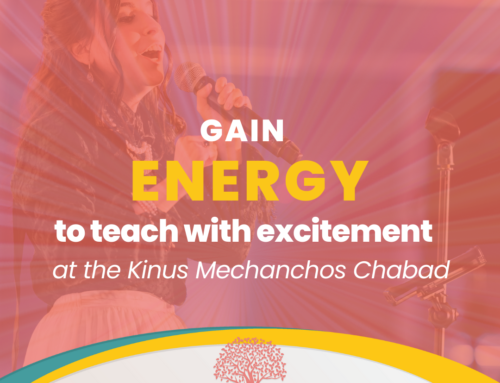By Mrs. Chana Rose, Educational Director of the Menachem Education Foundation
In the passage of the Arba Banim, the Haggada first addresses two extremes – the Chacham and Rasha, whom we have discussed in the past two weeks. The next son addressed is in the middle – the Tam, the simple son.
In educational terms, we would call him (or her) the “middle third” – the child who, for better or for worse, we usually spend most of our time and effort teaching to. But what does this child actually need?
He approaches the Seder with interest, a blank slate: “What’s this,” he asks? It is entirely in our hands to pique his interest and to provide an answer that will engage, satisfy, and compel him to remain at the Seder.
The Haggada tells us to respond, “With a strong hand Hashem redeemed us from Egypt!” We use drama. “It was the house of slaves!” For no other son do we describe Mitzrayim this way, painting the picture of contrast – from misery to miracles. With the Tam, we need to ‘dress to impress.’
The Tam might be the average student. He might not challenge us, like the Chacham. He might not question us, like the Rasha. That doesn’t mean, though, that he lets us off the hook. Even – and especially – for the average child, we need to learn and implement tools and strategies to engage and excite. We need to use all of our creativity and the best methods at our disposal to bring learning to life.
When Rava began a lesson, he did not launch straight into the shakla v’tarya at hand – even though, presumably, his students were already quite interested! Instead, he famously started with a “milsa d’bdichusa” – a joke, to open up their minds and hearts.
The Maharit on the posuk in Tehillim[1], “Your testimonies are wondrous, therefore my soul kept them,” explains that a child naturally remembers something that he finds amazing, and creating this element of surprise and interest is an important part of teaching Torah.[2]
Hashem Himself gave the Torah with thunder and lightning, creating an unforgettable backdrop to Kabolas HaTorah. How much more so should we mortal educators strive to create a setting for Limud HaTorah that speaks to a child’s natural inclination for the new and exciting!
I’d like to call this “the wow factor.” There are abundant strategies that help us translate this idea into our classrooms, in the bucket commonly referred to as “student engagement.” Beginning with the “hook” that acts as an anticipatory set to a lesson, a teacher can go on to use hands-on learning, multiple modalities, technology, and other tools to connect his students with the learning.
As the Rebbe emphasized, the litmus test for such strategies is whether they lead to greater learning. In a Sicha about technology, the Rebbe said:[3]
There are those who complain that since this is something new that they did not have in previous generations, it should not be used. However, it has been explained many times that this is not the “even habochen” (the litmus test), but rather, the result of using such devices – whether or not they add in matters of holiness, Torah and mitzvos.
Technology aside, for generations the Seder has been the foremost example of immersive, multisensory education. Predicated on “v’higad’ta libincha,” the Seder is more than a lesson plan – it is an experience. It is a very organized, clearly planned, and novel experience – and this is what is highlighted in the answer to the Tam.
The world of today’s typical child is filled with experiences. Those experiences are loud, colorful, varied and constant. The Tam might just be stopping at the Seder table on the way to do something else, when his interest is arrested, for just a moment, and he asks a question. We need to compete, and we have what it takes.
As educators, we are responsible to craft positive experiences of learning for our students, ones that propel them into further learning. In the classroom, we have a narrow sliver of today’s generation’s famously short attention span. Let’s grab it.
[1] תהלים קיט:קכט
[2] From דרשות המהרי”ט, also quoted in “Revisiting Education,” page 54.
[3] תורת מנחם תשמ”ח, ע’ 185




